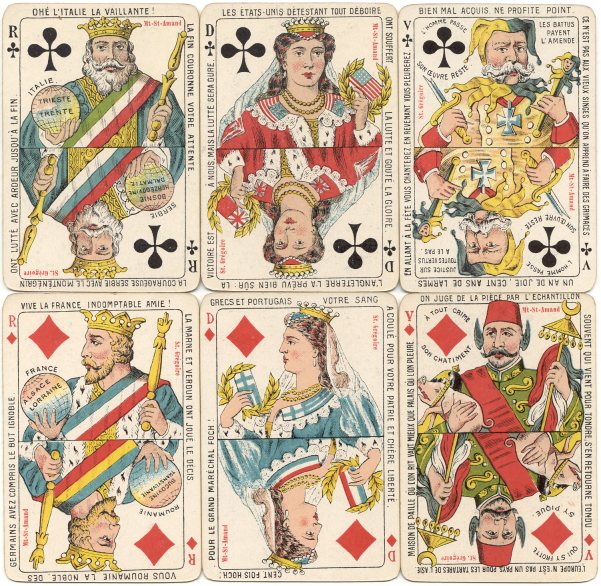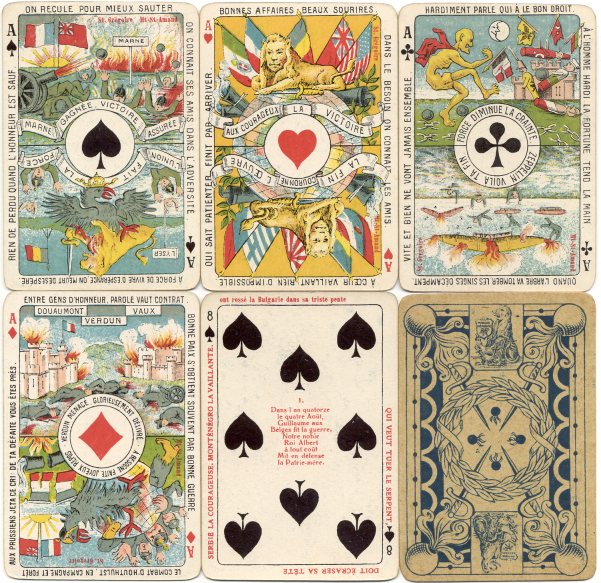|
|
King of Hearts from the "Jeu de Drapeaux", published in France in 1814 to welcome the return of Napoleon from the isle of Elba. The deck refers to some of the great battles, like at Waterloo, that Napoleon had fought before his exile. |
The history of mankind is filled with wars and our towns filled with statues or plaquettes to commemorate events and those who didn't survive. Tons of books were written about them, so we wouldn't forget the winners and the losers, the battles and the madness or the heroism and the tragedy.
So it's not hard to imagine that playing cards have also been used as a means to commemorate a war. Sometimes in historic decks aces show battle scenes from wars that ended centuries ago, but there are also decks that were made right after a war had ended.
|
|
King of Hearts from the "Jeu de Drapeaux", published in France in 1814 to welcome the return of Napoleon from the isle of Elba. The deck refers to some of the great battles, like at Waterloo, that Napoleon had fought before his exile. |
As playing cards became easier to produce and therefor also more available to the general public, it is not a surprise that the number of different decks that were produced around a specific war would only grow bigger.
In the 20th century there was mass production and there were a couple of major wars, so a good number of war decks was made. Their role was more a commemorative one at first, but has slowly been diverted to serve a more political goal. The 21st century brought the 2nd Gulfwar and the decks that were issued around this war plainly served as a means of (political) propaganda only.
In the beginning of the 20th century the First World War (1914-1918) had set Europe on fire. It was a bloody war, faught in trenches most of the time, with a slow moving frontline. Bombardments and mustard gas caused 100.000's to die. The southern part of Belgium and the northern part of France were heavily damaged, being one of the major battlefields in this war.
In 1919 the Belgian playing card manufacturer L. Biermans from Turnhout published this remarkable deck as "Jeu des Alliés". The deck is full of slogans, kind words for the Allies and harsh ones for the defeated Germany and its emperor Wilhelm (depicted on the Jack of Spades together with"It's a great fall from emperor to nothing").
Printed in lithography, the general design still reflects the passion and commitment, the feeling of unity and the relief, that the Belgians must have felt in the first months after the end of the war.

The Ace of Hearts celebrates the final victory of the Allies, the other aces show decisive battles. Of the pip cards in each suit the 10 - 7's and the 6S, 5C, 5H and 5D have small captions and slogans like "He who wants to kill the snake, has to crush it's head".

-1- -2-
-3- -4- -5-
-6- -7- -8-
-9- -10- -11-
-12- -13-
XPOHOME
last update: 1-9-2006